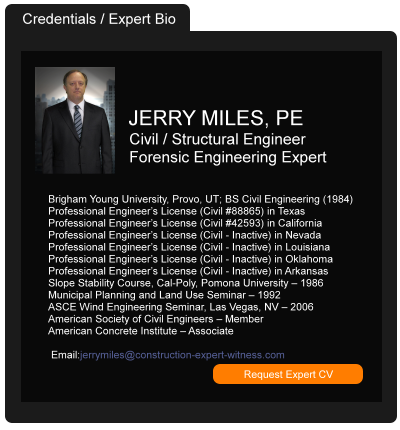Effects of Amendment to Florida's Statute of Repose on the Products Completed Operations Hazard
November 06, 2018 —
Richard W. Brown & Grace V. Hebbel - Saxe Doernberger & Vita, P.C.Recent amendments to Florida’s Statute of Repose have resulted in concerns as to the scope of risk Florida homebuilders face as a result, and the availability of insurance coverage for such exposures. Previously, the statute provided for a strict, yet straightforward 10-year limitation for latent construction defect claims. Under that language, issues arose when suits were filed near expiration of the statute, because parties seeking to defend claims were given little time to effectively assert related claims. The amendment to the statute serves to lengthen the statute of repose to 11 years for certain cross-claims, compulsory counterclaims, and third-party claims, and in limited circumstances, potentially even longer. Most policies in the Florida marketplace serve to limit coverage under the products-completed operations hazard (“PCO”) to 10 years, and thus, in very limited circumstances, an insured contractor may be exposed to third-party claims under the revised statute. It is important to note, however, that coverage under most CGL policies is occurrence-based, meaning that the policy is triggered by property damage that occurs during the policy period, and therefore, any subsequent claims permitted under the amended statute will necessarily relate to the original property damage that occurred during the 10-year period, and thus, would be covered under the standard 10-year PCO extension. This paper will analyze the anticipated effect of the amendments upon coverage under a 10-year PCO extension.
Reprinted courtesy of
Richard W. Brown, Saxe Doernberger & Vita P.C. and
Grace V. Hebbel, Saxe Doernberger & Vita P.C.
Mr. Brown may be contacted at rwb@sdvlaw.com
Ms. Hebbel may be contacted at gvh@sdvlaw.com
Read the court decisionRead the full story...Reprinted courtesy of
Remote Depositions in the Post-Covid-19 World
September 06, 2021 —
Islam M. Ahmad - Wilke Fleury, LLPDespite the easing of COVID-19 restrictions in California, many of the changes imposed on the legal industry by the pandemic will likely remain in effect for the foreseeable future. One major change for litigators has been conducting depositions remotely. This change takes an already intricate task and makes it further complex by adding a new dimension of factors to consider. It is imperative that litigators understand these factors to avoid giving their opposition an undue advantage and to maximize the utility of depositions. While we may disagree as to whether remote depositions are a welcome change, the fact of the matter is that lawyers must adapt to them and provide adequate legal representation. This article explores some of the challenges and opportunities presented by remote depositions.
- The Deponent
The deponent is the single most important element of any deposition and handing it properly becomes even more delicate in remote settings. I recently took a deposition where the plaintiff met their attorney for the first time at their deposition. The result was not spectacular. The plaintiff was ill-prepared, and the case eventually settled for far less than what it might have if it had been better prepared.
Read the court decisionRead the full story...Reprinted courtesy of
Islam M. Ahmad, Wilke Fleury, LLPMr. Ahmad may be contacted at
iahmad@wilkefleury.com
Real Estate & Construction News Roundup (6/4/24) – New CRE Litmus Tests, Tech Integration in Real Estate and a Jump in Investor Home Purchases
July 02, 2024 —
Pillsbury's Construction & Real Estate Law Team - Gravel2Gavel Construction & Real Estate Law BlogIn our latest roundup, big bank exposure to CRE lending grows, concerns for the construction industry abound, U.S. hotel securitized loans come due, and more!
Read the court decisionRead the full story...Reprinted courtesy of
Pillsbury's Construction & Real Estate Law Team
Florida Governor Signs Construction Defect Amendments into Law
September 17, 2015 —
Beverley BevenFlorez-CDJ STAFFAccording to Jeffrey Gilbert and Anaysa Gallardo Stutzman of Cozen O’Connor, Rick Scott, governor of Florida, signed HB 87 into law, which “amends the notice and opportunity to cure provisions of Chapter 558, Florida’s Construction Defect Statute.” The amendments go into effect October first.
HB 87 requires “property owners to provide concrete details of the alleged defects.” Gilbert and Stutzman claimed, “Overall, these amendments seek to further the intended public policy purpose of Chapter 558, which is to provide an alternative dispute resolution mechanism and result in fewer lawsuits and lower litigation costs incurred by parties involved in construction defect matters.”
Read the court decisionRead the full story...Reprinted courtesy of
Statute of Limitations Upheld in Construction Defect Case
September 30, 2011 —
CDJ STAFFThe Missouri Court of Appeals has ruled in Ball v. Friese Construction Co., finding that Mr. Ball’s claims were barred by the statute of limitations.
Mr. Ball hired Friese Construction Company to build a single-family home. The sale was completed on March 29, 2001. That December, Mr. Ball complained of cracks in the basement floor. SCI Engineering, n engineering firm, hired by Friese, determined that the home’s footing had settled and recommended that Mr. Ball hire a structural engineer to determine if the footings were properly designed and sized. In September 2002, the structural engineer, Strain Engineering, determined that the cracks were due to slab movement, caused in part by water beneath the slab, recommending measures to move water away from the foundation. In 2005, Mr. Ball sent Friese correspondence “detailing issues he was having with the home, including problems with the basement slab, chimney structure, drywall tape, and doors.” All of these were attributed to the foundation problems. In 2006, Friese stated that the slab movement was due to Ball’s failure to maintain the storm water drains.
In 2009, Ball received a report from GeoTest “stating the house was resting on highly plastic clay soils.” He sued Friese in May, 2010. Friese was granted a summary judgment dismissing the suit, as the Missouri has a five-year statute of limitations. Ball appealed on the grounds that the extent of the damage could not be determined until after the third expert report. The appeals court rejected this claim, noting that a reasonable person would have concluded that after the conclusion of SCI and Strain Engineering that “injury and substantial damages may have occurred.”
The court concluded that as there were not “continuing wrongs causing new and distinct damages,” he should have filed his lawsuit after the first two expert reports, not waiting seven years for a third expert to opine.
Read the court’s decision…
Read the court decisionRead the full story...Reprinted courtesy of
Drone Operation in a Construction Zone
August 17, 2020 —
Mark R. Berry & Freddy X. Muñoz - Peckar & AbramsonThe potential uses of unmanned aircraft systems (UAS) in the construction industry continue to expand as new technologies enter the market and construction companies realize UAS can perform unique tasks at tremendous cost savings. The full technological capabilities of UAS are, however, limited by law for public safety reasons. UAS share airspace with traditional passenger, military and cargo aircraft, and are potential hazards for humans below. The risk of potential catastrophic collisions has led to a careful approach to the adoption of this technology.
All U.S. airspace is exclusively regulated by the Federal Aviation Administration (FAA), and therefore, most drone regulation originates from this agency. Many states and localities have also enacted additional limits on UAS operations, and many of these nonfederal regulations are presently on unsure footing after a federal court ruling in Singer v. Newton invalidated a local regulation that conflicted with FAA regulations.
What is clear is that all commercial UAS operations must comply with FAA regulations. Any drone operation conducted by any private company, even through use of an employee’s personal drone, would constitute commercial operation subject to regulation.
Reprinted courtesy of
Mark R. Berry, Peckar & Abramson and
Freddy X. Muñoz, Peckar & Abramson
Mr. Berry may be contacted at mberry@pecklaw.com
Mr. Muñoz may be contacted at fmunoz@pecklaw.com
Read the court decisionRead the full story...Reprinted courtesy of
Meet Orange County Bar Associations 2024 Leaders
April 08, 2024 —
Dolores Montoya - Bremer Whyte Brown & O'Meara LLPBremer Whyte Brown & O’Meara, LLP is proud to share that CEO/Founding Partner Nicole Whyte and Orange County Bar Association’s (“OCBA”) leaders are featured in the Orange County Lawyer (“OCL”) publication, Who’s Who In The OCBA, that was released earlier this month. To see this year’s 2024 board of directors, section leaders, committee chairs, task forces, and charitable fund board, please click
here.
Nicole Whyte provides individualized counseling and representation in all areas of Family Law. She has served on various OCBA legal committees and boards for over two decades and was elected to OCBA’s Board of Directors in 2024. She is committed to supporting the needs of the OCBA and its thriving and diverse OC legal community.
Read the court decisionRead the full story...Reprinted courtesy of
Dolores Montoya, Bremer Whyte Brown & O'Meara LLP
Montana Significantly Revises Its Product Liability Laws
May 22, 2023 —
William L. Doerler - The Subrogation StrategistOn May 4, 2023, Montana changed its product liability laws when the Governor signed SB 216, which was effective upon passage and applies to claims that accrue on or after May 4, 2023. Among the changes is the adoption of a sealed container defense and the application of comparative negligence principles in strict liability actions. Montana also adopted a defense based on certain actions not being brought within 10 years. In addition, Montana adopted a rebuttable presumption with respect to a product’s defective condition. A jury must be informed about this rebuttable presumption with respect to certain warnings claims, premarket licensing procedures or claims involving drugs and/or medical devices. The changes to the Montana Code are further described below.
- In situations where there are multiple defendants, a defendant in a strict liability or breach of warranty action may now assert, as a defense, that the damages of the claimant were caused in full or in part by a person with whom the claimant has settled or released from liability. See MCA § 27-1-703(6)(a) (as revised). Comparative negligence or fault defenses are also available in actions against sellers, even where there are not multiple defendants. See MCA § 27-1-719(4)(e) (discussing a seller’s defenses in situations other than multiple defendant situations) (as revised).
Read the court decisionRead the full story...Reprinted courtesy of
William L. Doerler, White and Williams LLPMr. Doerler may be contacted at
doerlerw@whiteandwilliams.com


































































